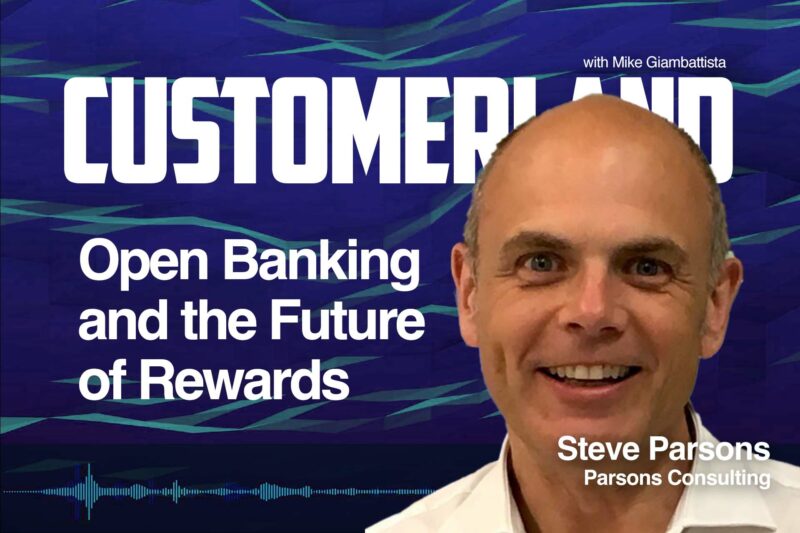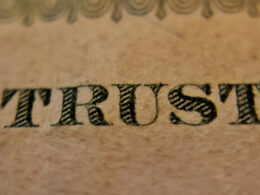Ever wondered how the world of open banking is revolutionizing rewards and incentives? Join me and open banking consultant Steve Parsons, as we unravel the intersections of open banking, rewards, and the critical governance that frames it all. It’s a deep exploration into the General Data Protection Regulations and Payment Services Directive 2, as we discuss how these directives are empowering consumers while disrupting the traditional brand-customer dynamic.
Imagine a world where every reward you receive is tailor-made around your transactional data. That’s precisely what open banking is bringing to the table. In our conversation, we take a keen look at how open banking serves as a catalyst for personalized rewards and an interesting angle on cross-selling. We also discuss the impactful idea of personal financial managers and the exciting prospect of frictionless rewards.
Trust, a cornerstone of any relationship, is even more critical when finances are involved. Tune in as Steve and I dissect the role of trust in open banking and the intriguing ways it shapes both customer and brand behaviors. We also look beyond the financial realm, exploring how open banking tactics can be used in cross-selling and loyalty programs in various sectors like insurance and retail.
Chapters in this episode
0:01. Open Banking and Rewards
7:19. Open Banking and Personalized Rewards
19:26. Trust in Open Banking
27:25. Organizations Embracing Open Banking Benefits
Full transcript
Mike Giambattista
This is the wrong title, I know this, but I’m going to call you consultant to the open banking stars. Steve and I have had a couple of conversations. He is very, very familiar with the concepts of open banking, but I think what intrigued me about the conversation what we had and were about to have and explore even deeper is how open banking opens up opportunities for companies in rewards and incentives. So I’ll apologize for my less than adequate introduction to who you are, but, Steve, thanks for joining me. I really appreciate it.
Steve Parsons
No, you’re very welcome. I’m actually really sort of fascinated and looking forward to being here and sharing some of my insights. I also like the framing of the fact that you called me a star, which doesn’t happen very often in life, so I will take that one and smile.
Mike Giambattista
Well, by reputation, you certainly are.
Steve Parsons
So thank you very much.
Mike Giambattista
Maybe just to take off of that point, tell us a little bit about your background, what it is you do, how you come by this knowledge and understand it.
Steve Parsons
Okay, I will keep this brief but hopefully informative. So I’ve spent my career actually helping brands identify ways to maximize the value of the relationship that they have with their customer base, and that has progressed through membership programs, through subscription programs and then increasingly into sort of loyalty and engagement programs that looked to build on the relationship a brand had with its customer base and incorporated all of the data sources it had about its customers so that it could understand its customers better and build a stronger and more relevant relationship. And those experiences of creating and delivering those programs kind of led me into the world of card linked offers and open banking, because of the richness of banking data that is available that can help both banking brands and other brands inform the relationship they have with their customers and really add value to it.
Mike Giambattista
So in a prior conversation you described the. It wasn’t a moment, but it was, I guess, sort of a recognition of what open banking concepts could mean in the worlds of rewards and incentives, specifically card linked offers, and how that could work. I’m really excited to kind of unpack that with you First of all. I think it would be helpful. Maybe we can just talk kind of high level about open banking, what it is, how it can be thought of, Okay, Okay, yeah.
Steve Parsons
And I suppose to start with open banking, I think I need to bring in two other pieces of information and I apologize for adding layers in, but the background to open banking really I think needs to be understood through the paradigm of the GDPR, the General Data Protection.
Regulations and also what in Europe was called PSD2, payment Services Directive 2. Now both of those happened and came into being sort of seven to eight years ago and we’re both doing had different objectives but were very much looking, but very much in form, open banking. So General Data Protection Regulations looked very much to provide a framework of sort of security, control and transparency for consumers with their data, and brands that use that data had to behave respectfully with it. But at the same time, the Payment Services Directive very much came along and said but we also want to open up and enable competition and innovation with respect to financial services, payments and make the use of data perhaps a little more liberal. So with both of these coming in, what happened was that consumers both got control, security and transparency of their data, but at the same time they were given the ability to choose what happened with that data with respect to financial services.
In the old days I would have given the data that I had with my bank was between me and my bank, no one else. What PSD2 did was go. Actually, Steve, you have the right to give that data to anyone, any other organization that can help you get value from it. And so the combination of PSD2 with its liberalization features for banking and GDPR with its sort of security and transparency and control of data, very much enabled sort of open banking, and by open banking is very much that ability for that requirement actually for banks to be able to give data back to a customer and allow them to share it with whoever they want to share it, provided it is done in a regulatory and secure way.
Mike Giambattista
So help me find the intersection between open banking, which should be very obvious, but I’ll let you describe it the intersection between open banking concepts and now regulations and rewards and incentives.
Steve Parsons
Yes, certainly so, and in this I’ll probably use myself as the guinea pig as well. So hopefully, try and sort of bring it alive. So I, as an individual consumer, have a number of different banking relationships with very, very granular transactional information within it. It informs exactly where and how I spend my money, how much, with which brands, what kind of things I spend the money on. Now that data is really valuable insight, that first party data, to give a really valuable insight into how Steve Parsons lives his life and that is actually how he economically lives his life. Because, mike, I can tell you I’m interested in lots and lots of things and I love rugby, for example, but I spent very little of my income on it, Whereas actually if you looked at my bank accounts, you’d see actually I’m constrained by families, mortgages and other responsibilities that really dictate where my money goes.
So the ability of open banking is to give you a very, very granular insight into Steve’s data. If you have that granular insight into Steve’s data, then actually that becomes very valuable with respect to personalizing rewards and creating relevant rewards for Steve, because you can see what his transactional history has been. So not only can you see rewards and benefits. That may very well help Steve. But you can also introduce Steve to brands perhaps that can be useful to him that he’s never engaged with before for whatever reason, and they can be large, international brands. Equally they can be local, community based brands as well. You know, I noticed Steve eats a lot of Chinese food. Maybe actually there’s a Chinese restaurant down the road he’s never, ever tried that. Would like to start up a connection with him.
Mike Giambattista
So let’s talk a little bit about some of the actual use cases. How are organizations deploying these ideas? Do you have any examples?
Steve Parsons
Yeah, I think increasingly people are starting to use these ideas in a number of ways and I think we’ll see them grow. So, first and foremost, actually the simplest use case of open banking I’m going to say doesn’t involve rewards at all. What it is, it gives you the ability to have a personal financial manager. So I’m going to use the case of me again. I don’t have one banking relationship, I have two or three. If I add in my savings, maybe some investments etc. I’ve probably got six or seven core financial relationships as a customer.
What it allows me to do is aggregate all of those together in one space so I can understand what I’m worth, how that worth is growing over time, and equally, show what, see where I’m spending my money. So I, as a person, get a, I’m able to budget, I’m able to plan, I’m able to do spending analysis on it. Step one, really, that’s like a service that you can give to your customer. But the generation of all of those insights then allow individuals to, or brands to perhaps target offers and rewards that may be valuable. They may be cross sales or upgrades from a banking brand, they may be, they may be alternative brands, like the restaurant example I just gave. I think then, once you’ve done that, what then happens is okay. Let me, let’s say, I want to introduce Steve to a new brand. One of the great benefits of open banking is that you can deliver a reward to them in an effortless and frictionless way.
Mike Giambattista
Tell me how that could work.
Steve Parsons
So that work? How that works, quite simply, is that I want Steve to engage with my restaurant brand. What happens is is that, in effect, I make an offer to him, Steve registers that offer. It can either be implied, in so far as he’s just seen it, or explicit and Steve says yeah, I’ve always wanted to try that restaurant. Give me the offer of, say, 10 pounds off. But whether it’s implied or explicit, that interest is registered and then Steve uses his normal bank card to go and spend in that restaurant and that bank card, as it’s linked to that bank account, that bank account registers a transaction in that brand, in that restaurant brand, and what happens is, as soon as it’s registered in the account, the discount and reward can be applied.
So it’s a totally frictionless benefit for the customer. They don’t have to do anything to get it. Secondly, they can consume it at their leisure. If you and I were talking right now and you made me an offer, mike, and said, ok, it’s 10 pounds off at your local, local Vietnamese restaurant. I can’t use that right now, but I’m going to say, mike, I am going to bank that because when I go with my family on Sunday night I’m going to be able to use that benefit. One of the great advantages of using open banking data is that the customer can use a reward in a time frame that they want to, not in a time frame in which the advertiser or merchant promotes it to you.
Mike Giambattista
It also seems that it would put the I would say the bank, the financial institution behind it in kind of a super hub position to be where all of that transactional data and personal financial information happens in one central place. You have the ability to see an awful lot that you wouldn’t ordinarily see otherwise.
Steve Parsons
Yeah, one of the I think one of the constraints of methodologies we use currently for delivery of rewards is that they are not generally. They’re not, they’re not expansive in terms of the view of the relationship that you get.
When you’re reading my like I suppose. I mean, if I’m doing a sort of an affiliate offer via a website, for example, I can see the value of that transaction. Similarly, if I’m doing a card linked offer, I see the value of the card linked offer transactions that I’m doing. But I don’t see Steve in his entirety. I only see the transactions that he engages with me on Within open banking. I get to see and I get to understand and appreciate all of it. That is something that I see, the context of Steve’s transaction that he does with me in the context of his overall sort of financial, financial, financial suite, whether that be transactions or accounts. So I have a really good and deep and rich view of who Steve is and how he spends his money, and that should enable me, as a brand, to help him achieve and meet his objectives.
What is a Brand Expectation Audit?
What could you achieve if you knew what your customers expected ahead of time? What if you could know what customers expect by category and by brand 12 to 18 months ahead of traditional brand tracking methods? And what if you could know exactly where to adjust and where to spend in order to derive the most benefit every time. A customer expectation audit allows you to identify areas that require strategic reinforcement, as well as pinpoint which values will contribute most to an emotional bond with your brand and optimize accordingly.
Customerland has partnered with Brand Keys, the world’s oldest loyalty focused consumer research firm, to bring real world customer expectation audits to brands, brand managers and to CX practitioners everywhere Want to know where your brand stands and exactly what to do about it.
Go to expectationaudit.com and download a sample audit today.
Mike Giambattista
If you’ll permit me. It all sounds lovely and exciting and the potential is wild, but it’s not all love and roses. I mean, there are certainly regulatory considerations, but it would seem to me that it would require financial institutions, or whoever the merchant might be, to step up their game, so to speak, and really understanding the customer, because it’s one thing to have the data or have access to the data. It’s entirely another thing to be using it and leveraging it well.
Steve Parsons
I agree entirely and I think, actually, mike, in there there’s a key word, which is trust. As you know, open banking is premised on the view that the end customer gives the authority to share their banking data with a brand, with someone else. Now, an individual is not gonna share their banking data with any particular anyone. Really, they are going to do it on the basis of a brand that they trust, and those brands that they trust can be trust from a number of angles. For example, trust might be. Banking brands, for example, are probably very, very high on trust with respect to security.
I trust my bank to look after my data, but there are other elements of trust that other brands perhaps could tap into. So community trust I want to support and engage with my local environment is another form of trust that actually would make sort of an individual be prepared to share their data to sort of both extract extra value for themselves and also maybe provide extra benefits for their community. But ultimately, an individual is only going to share their data if they trust the brand that they are sharing with. It’s not a relationship I think that you can jump into immediately and go hey, Steve, give me your data. There’s a building of a relationship there. That takes time and an emotional connection to build.
Mike Giambattista
I’d love to explore that aspect of this proposition a little more deeply because it’s aside from rewards and incentives and how they might be applied through open banking concepts.
Customer and brand trust has been something that organizations have been wrestling with for a couple of decades now, and it seems that trust, the idea of trust, was something that kind of lived on the periphery of brand affinity. It was just a component of brand affinity. But with what you’re talking about, that things become that transactional and that immediate. That trust is no longer something that can be considered secondarily. Trust has to be a part of the strategy and the tactical application of the whole thing. Just to kind of reframe the question is that consumer brand trust has been a consideration for a long, long time, but I never saw it in any of my conversations or any of my efforts as a tactic. It was always something that you had to kind of bake into a brand story and how that got worked out. But what we’re talking about here is something that’s much more transactional, much more direct, and if that sense of trust is not clearly established beyond some threshold whatever that is these concepts can’t work at all.
Steve Parsons
Yeah, that’s very true, and I think it’s a two-way street, as in to build trust and then deliver it. I also need to gain a certain amount of trust in the first place to be able to deliver that and build on it. So it is very much a process of incremental growth by using transactions as a methodology for building that trust, whereas previously trust has been seen as almost like a goal and then the Nirvana that you reach when you’ve done lots of other things. I think one of the powerful bits about over-income banking is actually enables you to almost like, start at little trust and build your way up to big trust over a period of time, and each step kind of reinforces the first one. So, first and foremost, obviously, in order for a customer to be given, maybe, access to some great offers that they wouldn’t necessarily see elsewhere, they have to share their banking data through open banking.
Let’s say they share one account, their primary current account. So you’ve got to establish that level of trust. But once you’ve got a little bit of data to work with, then the aim is to be able to deliver a positive experience back to the customer in terms of maybe an offer for that restaurant up the road that they haven’t yet used. That then evolves into a frictionless transaction. Steve goes there on Sunday, he gets his discount on Monday, it’s there recorded in his bank account. It’s frictionless, it’s easy, it’s consumed without him having to do anything more.
His trust level goes up a little more. He creates a little bit of an emotional bond with the brand and then he’s willing to try it again. He does it again and again and suddenly he builds up the frequency of using that proposition and using open banking to access rewards and benefits. And that then creates a virtual cycle, because it then allows the organization to maybe open up and expand the relationship that they have with Steve. They can maybe say, well, why not add some other accounts? Maybe I can add some additional value in other places. Maybe that value is through a community program or through a ecosystem partnership with a brand, that where Steve’s bank account doubles as a loyalty card in that brand. So I think it’s this constant layering and building that really contributes to the development of trust.
Mike Giambattista
It also seems like and I think I’m about to paraphrase what you’ve been talking about the whole time here it also opens up opportunities outside of financial services where those core transactions might be visible and aggregated into other types of customer relationships. So I’m thinking of, you know, outside of financial services. I can think of insurances and savings and other retail kinds of relationships that could all be assumed into this open banking ecosystem relationship.
Steve Parsons
Hey, I agree, I agree. I think if you think about a banking relationship or an insurance relationship, one of the things about approaching a customer with an offer is understanding if you’ve got your timing and your positioning right. If you think about an insurance cross-sell, well, open banking can give you insight into when does Steve renew his insurances. It gives you a little insight into how much he’s spending on those insurances. It tells you when, how much and how much he’s spending. What a great opportunity to actually maximize your communication effort to actually get your timing right. I know a renewal is coming up. Let me make sure I get my message placed with Steve so that it’s a value of him before he renews. That. Insurance is a great example that ability to cross-sell and upgrade additional banking-style products and bank assurance products.
Outside of that, I think there are also use cases in places like retail. How often do you and I actually and you’re probably going to say never, but I often go to the shops and forget to hand over my loyalty card, whether that be physically or digitally. There’s someone in the queue behind me that’s in a real hurry. I’m a bit flustered. I’m not going to show my loyalty card. In many instances I’m checking out a brands I love, without that brand, even knowing that I was there. One thing that things like Open Banking give you is that ability to make sure that any loyalty transaction you have with the brand is registered, because you’re allowing them to see that that transaction has occurred wherever it occurs.
Mike Giambattista
What you’re talking about here have been brass-ring goals for a long time, but Open Banking seems to allow the connections and the sharing information that’s never been allowed before. Having said that, are you aware of any organizations that are actually already deploying these kinds of activities, or is this still being talked about as in a more theoretical sense?
Steve Parsons
I think increasingly, and I am aware of organizations that are deploying it and I see year after year, the momentum growing with respect to it.
Initially, I think we started much of the talk was about card linked office, which don’t work on the Open Banking rails, but increasingly, and I’m going to say particularly, banking brands at the moment are beginning to see the power of Open Banking. There are organizations at the moment actually your question kind of sparks some recent reports on the French market that really show how banking brands are beginning to use Open Banking to really generate additional value and increase card usage, increase card the number of transactions, the value of the transactions and also having a direct relationship on the retention of customers. So I’m going to do a name drop now, which is if you pay, lead, for example, recently distributed a report that very much showed how banking brands in France are beginning to really see the power of Open Banking on their key metrics and their key loyalty portfolios. So which I must admit, is absolutely fascinating to see because intuitively it should work because of the richness of the data that you have and the frictionless transactions that you can create, and it’s interesting to see it’s actually coming to fruition.













